The Baltimore Banner thanks its sponsors. Become one.
NIL
Lane Kiffin trolls Kirby Smart over NIL, recruiting during SEC spring meetings
During an interview with YouTuber Bordeaux at an EA Sports College Football 26 media opportunity, Ole Miss head coach Lane Kiffin threw a jab at Georgia head coach Kirby Smart. When asked about winning the NIL/recruiting battle, Kiffin responded by trolling the two-time National Championship winning coach. Ole Miss HC Lane Kiffin was asked about […]
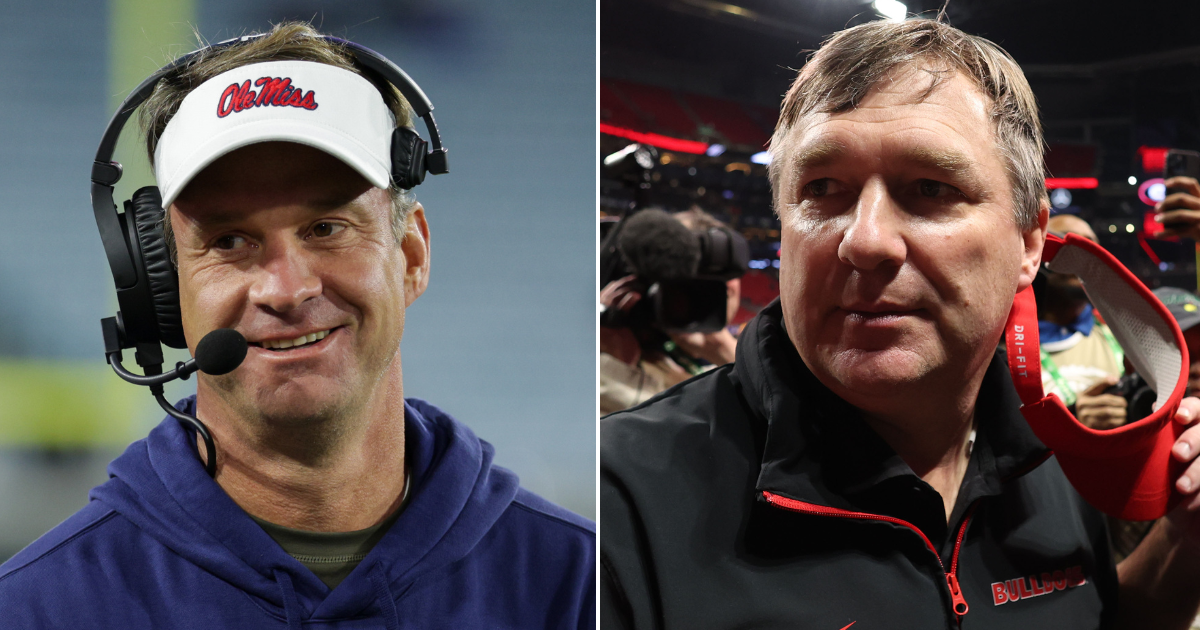
During an interview with YouTuber Bordeaux at an EA Sports College Football 26 media opportunity, Ole Miss head coach Lane Kiffin threw a jab at Georgia head coach Kirby Smart.
When asked about winning the NIL/recruiting battle, Kiffin responded by trolling the two-time National Championship winning coach.
“Yeah, money,” Kiffin responded when asked about getting players. “NIL, like that Georgia coach over there. He just outpays everybody.”
In his first season as head coach at the University of Georgia, Kirby Smart and his staff brought in the No. 11 ranked recruiting class in the country. Since then, the Bulldogs have brought in a top-three recruiting class in every single cycle. They’ve had the No. 1 recruiting class in 2018, 2020 and 2024, the No. 2 class in 2019, 2023 and 2025, and the No. 3 class in 2017, 2021 and 2022.
According to On3’s college Football NIL Valuations, seven different Georgia football players are making at least $500k in NIL this upcoming season. The entire list is below:
Since Kiffin became head coach at Ole Miss in 2020, the two high-profile coaches are tied at a game in each in head-to-head matchups. Georgia demolished the Rebels 52-17 in the first meeting on November 11, 2023, but Ole Miss got its revenge on November 9, 2024 with a convincing 28-10 win.
Georgia will open the 2025 season on August 30 against Marshall. Smart’s Bulldogs will come out with an attitude this season, as they fell to Notre Dame 23-10 in last season’s College Football Quarterfinals (Sugar Bowl).
The 2024 season was also a bit of a disappointing one for Lane Kiffin’s Ole Miss Rebels, as losses to unranked Kentucky and Florida kept them out of the College Football Playoff. They will open the 2025 season on August 30 against Georgia State.
Although Kiffin’s jab at Smart was likely a friendly one, the series between the two while at their current schools is tied at one game apiece. That however will not be the case when Georgia and Ole Miss meet in Athens on October 18. That will likely be an integral result in determining the two teams that will face off in December’s SEC Championship game.
NIL
Haliburton Says Game 7 Narratives Will Be ‘Almost Poison’ and He Deleted Social Media
Following the Indiana Pacers’ 108-91 win over the Oklahoma City Thunder in Game 6 of the NBA Finals on Thursday, superstar guard Tyrese Haliburton preached the importance of blocking out any outside noise entering Sunday’s Game 7. Speaking to reporters following Indiana’s series-extending victory (beginning at the 2:05 mark of video), Haliburton expressed his belief […]
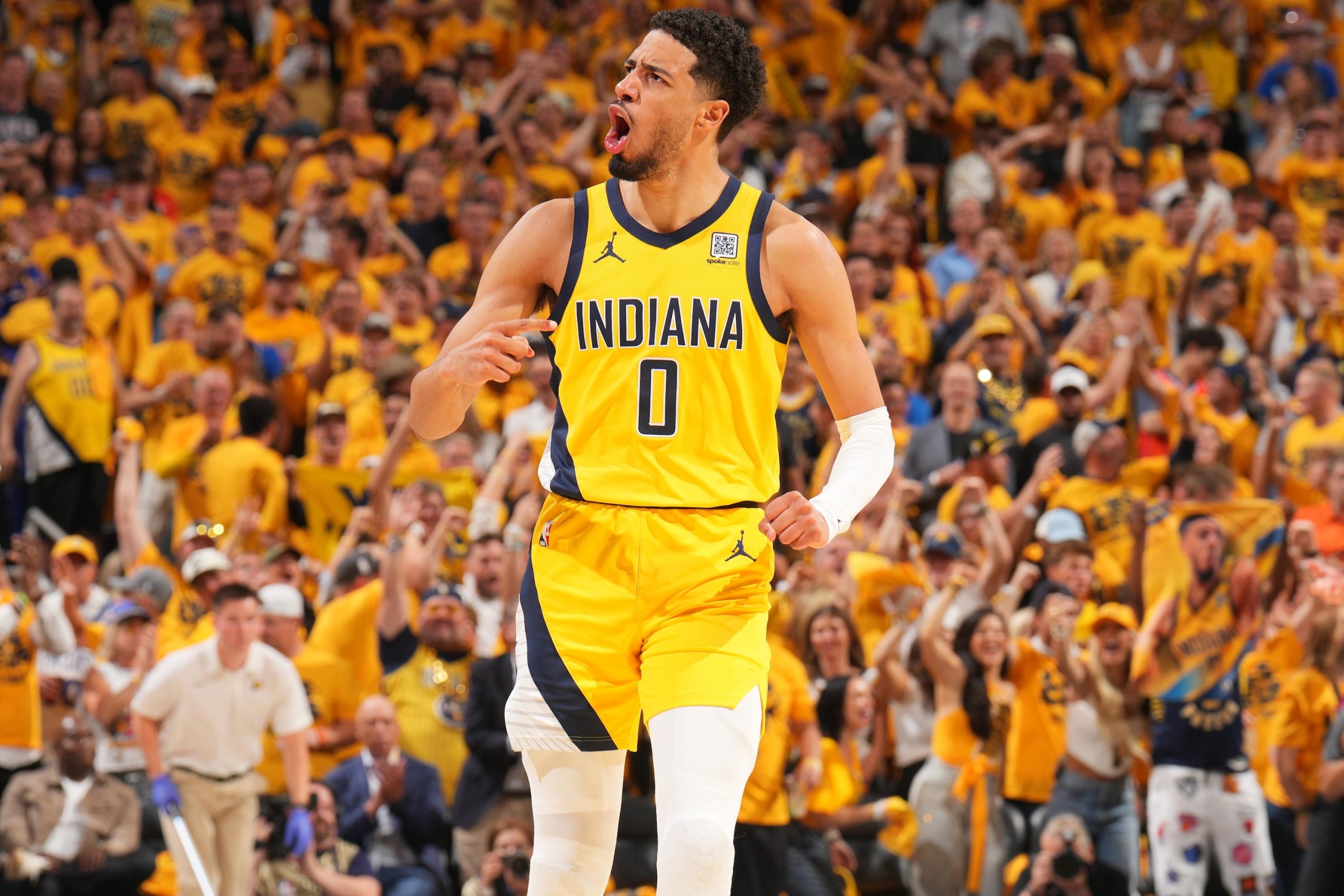
Following the Indiana Pacers’ 108-91 win over the Oklahoma City Thunder in Game 6 of the NBA Finals on Thursday, superstar guard Tyrese Haliburton preached the importance of blocking out any outside noise entering Sunday’s Game 7.
Speaking to reporters following Indiana’s series-extending victory (beginning at the 2:05 mark of video), Haliburton expressed his belief that the Pacers have to focus solely on what they plan to do on the court in Game 7, and nothing else (h/t ESPN’s Jamal Collier):
“The narratives are going to be almost poison. To talk about what this would mean to our city and our organization and legacy talk, and we played so well and now the pressure is on [the Thunder] … there’s going to be narratives that we can’t really pay attention to.
“We’ve got to control what we can. So much of these games has come down to who is going to start the fight from a physicality standpoint, take care of the ball better and rebound the ball better. Those are the important things that we need to focus on. I don’t even want to say, celebrate this one tonight and move on. It’s done with. We did our job to take care of home court, and we have to be ready to compete in Game 7.”
Haliburton has taken some personal steps to remain locked in during the NBA Finals, including limiting his social media usage.
When asked about the fact that he hasn’t posted on X since June 6, which was the day after Indiana beat OKC in Game 1 of the Finals, Haliburton confirmed that he has kept his social media time to a minimum (beginning at the 3:50 mark of video).
Haliburton said he has “tried my best” to stay off social media by deleting the apps off his phone, although he did admit to going on X from time to time in order to keep up with WWE news.
While Haliburton has been paramount to the Pacers’ playoff success, it was uncertain until Thursday whether he would be able to suit up in Game 6 after suffering a calf strain in Game 5.
Head coach Rick Carlisle monitored Haliburton’s minutes, but he still managed to make a sizable impact with 14 points, five assists and two steals in 23 minutes of action.
Now, Haliburton is set to lead the Pacers into what could be a franchise-defining game for both organizations.
The Pacers have a chance to win their first-ever NBA title and their first championship of any kind since winning their third ABA title in four years in 1973.
Meanwhile, the Thunder are looking to secure their first championship since moving to Oklahoma City, and the first title for the franchise since the Seattle SuperSonics won it all in 1979.
NIL
Shedeur Sanders Addresses Speeding Ticket At Cleveland Browns Celebrity Softball Game
Cleveland Browns rookie quarterback Shedeur Sanders—who starred for the Colorado Buffaloes—was one of many familiar faces at the second annual David Njoku Celebrity Softball Game, held at Classic Auto Group Park in Eastlake, Ohio. Njoku, the Browns’ Pro Bowl tight end, captained Team Njoku against Team Haden, led by former NFL cornerback Joe Haden. Jun […]
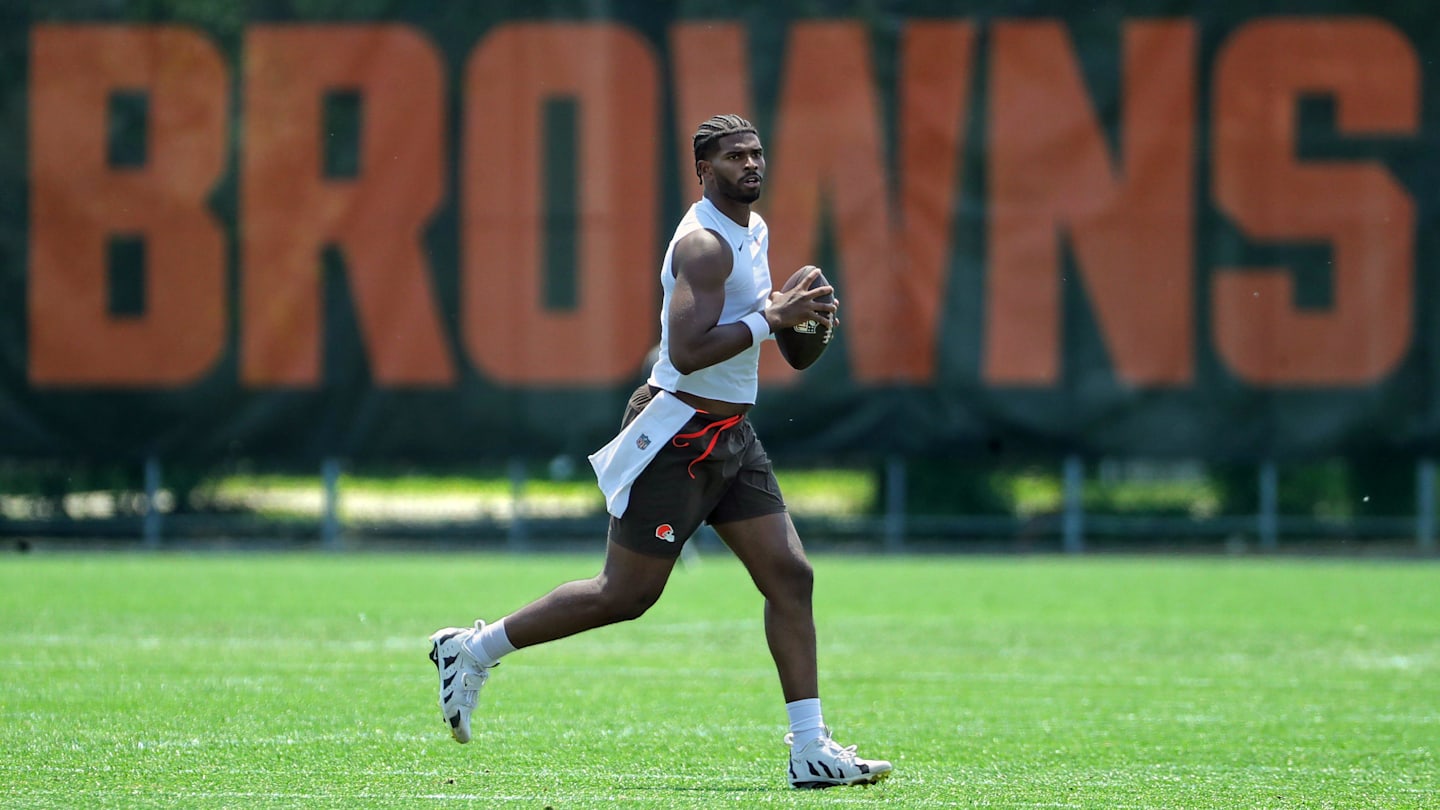
Cleveland Browns rookie quarterback Shedeur Sanders—who starred for the Colorado Buffaloes—was one of many familiar faces at the second annual David Njoku Celebrity Softball Game, held at Classic Auto Group Park in Eastlake, Ohio.
Njoku, the Browns’ Pro Bowl tight end, captained Team Njoku against Team Haden, led by former NFL cornerback Joe Haden.
The event featured a star-studded lineup of professional athletes, influencers, and local celebrities.
WWE superstars Tommaso Ciampa and Johnny Gargano took the field, along with internet personalities like Granny Smith and Kenny Brooks.
Fellow Browns players in attendance alongside Sanders included wide receiver Jerry Jeudy, wide receiver Cedric Tillman, safety Grant Delpit, cornerback MJ Emerson, as well as other NFL standouts like New England Patriots safety Jabrill Peppers and Arizona Cardinals linebacker Mack Wilson.
As expected, Sanders drew a strong crowd and plenty of cheers from fans—many eager to catch a glimpse of Cleveland’s high-profile rookie quarterback.
Before the game, chants rang out from young fans in the stands: “You’re the next [Tom] Brady!”
Another moment that quickly went viral showed a young fan shouting confidently from the bleachers: “You’re QB1! Nobody else but you! You’re the GOAT!”
Sanders smiled at the love. “I need him to be my motivator,” he joked. “I need to listen to him every day.”
The kids of Cleveland want 12 as qb1
pic.twitter.com/cZQ8k09Ko8
— Dalvinthetruth (@dalvinthetruth) June 20, 2025
The former Colorado standout also used the moment to acknowledge his recent speeding citations, doing so during a lighthearted portion of the livestream with Cleveland rapper Doe Boy.
“He’s just a regular kid; he didn’t do nothing wrong,” Doe Boy said, defending Sanders.
Sanders didn’t dodge the topic.
“I’ve made some wrong choices,” he admitted with a laugh. “I can own up to it. . . . I learn from them.”
Shedeur Sanders said this about his speeding violation:
“I’ve made some wrong choices, I can own up to it—I learn from them”
pic.twitter.com/RUTa1IJ20f
— GUCCE
(@gucceCU) June 19, 2025
MORE: Ex-Colorado Buffaloes Defensive Coordinator Lands New Job In SEC
MORE: Michael Irvin Confident Deion Sanders Will Bounce Back From Health Issues
MORE: Shedeur Sanders 101 MPH Speeding Ticket A ‘Learning Experience’ For Cleveland Rookie?
Earlier this month, Sanders was ticketed twice for speeding in Ohio—once on June 6 and again on June 16, reportedly reaching 101 mph in a 60-mph zone.
However, Sanders seized this public opportunity to take responsibility for his decisions.
From there, it was all about fun—and when the chance arrived, Sanders delivered at the plate, too.
In his first at-bat, Sanders sent a fly ball into shallow left field that dropped for a hit, bringing in a run after MJ Emerson escaped a rundown at home plate.
Shedeur Sanders looking like Pop’s

#NFL #dawgpound #SkoBuffs
pic.twitter.com/SbHr4nA4Rr— Ossacin’s Ducktail (@OssacinDucktail) June 20, 2025
Sanders advanced to second on the play, good for an RBI double on the unofficial stat sheet.
The moment offered a brief, entertaining glimpse of the two-sport athleticism he shares with his father: former Major League Baseball player, NFL Hall of Famer, and now Colorado Buffaloes coach Deion Sanders.
More than just a showcase of skills, Njoku’s charity event gave Sanders another opportunity to build chemistry with his teammates, connect with Browns fans, and continue settling into the Cleveland spotlight.
The former Colorado quarterback played in the spotlight throughout his entire college career, ultimately leading the Buffaloes to nine wins in 2024. Colorado won 10 games in 2016, but Sanders led the Buffaloes to one of their best seasons in recent memory.
While Sanders navigates a couple of early missteps off the field, it’s clear the rookie quarterback is still winning over Cleveland—building trust through play, personality, and presence.
NIL
Unintended Consequences
You guys probably recall the surprise when we all learned just how much Cooper Flagg made this past season at Duke, around $28 million. He’s an outlier of course, but the trend is unmistakable: income is going up across the board. Advertisement Advertisement Advertisement That’s a bit of problem and not just for the NCAA. […]
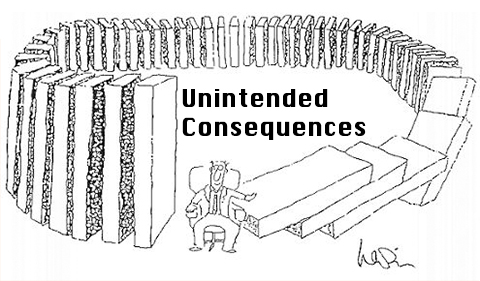


You guys probably recall the surprise when we all learned just how much Cooper Flagg made this past season at Duke, around $28 million.
He’s an outlier of course, but the trend is unmistakable: income is going up across the board.
Advertisement
That’s a bit of problem and not just for the NCAA. Turns out it’s causing a global…well, let’s call it a game drain.
What’s happening, in essence, is that NCAA players are suddenly making a lot more money than international players, and the employers of said international players don’t like it one bit.
Philippe Ausseur, the President of France’s National Basketball League, calls it looting, saying this:
“Given the number of players approached, about fifteen of whom have signed up, we can call it looting. The colleges are casting their net wide, even in Pro B, and are dispossessing us of a certain number of our key players without us being able to react.
Advertisement
“What took us by surprise were the amounts. We were expecting big contracts worth $350,000, but it’s $2 million…We were expecting half a dozen players to be approached, but it’s more than triple that…We’ve heard of agents trying to get clubs to sign certificates to demonstrate that their players are still amateurs. The situation remains unclear.”
Well first of all, looting seems like a very Gallic response to competition. Secondly, they didn’t complain when sub-NBA American players left college ball for European paychecks.
All that said, he does have a point: in a very short period of time, the NCAA has emerged as the second-best league in the world, the money keeps getting better and there are some real perks: you can get an education if you want, you get access to first-class coaching, facilities, training, nutrition and equipment. And you’re on TV all the time and thus on the NBA’s radar.
And while this appears to be less of a problem than it was in recent years, at least in Europe, there was a time when players spent way too much time trying to get paid. This has apparently been a problem for American players in China too. It’s less likely to be the case for NCAA players, which could also be a factor.
Advertisement
Blue Healer Auctions | Drop us a line
More from dukebasketballreport.com:
NIL
NCAA House settlement FAQ
AI-assisted summaryThe House vs. NCAA settlement allows direct payment to student-athletes and establishes a revenue sharing model.A College Sports Commission will oversee NIL activities and a clearinghouse called NIL Go will review deals over $600.Participating institutions, primarily Power 5 schools, must adhere to a revenue sharing cap and report NIL deals.The world of college recruiting […]
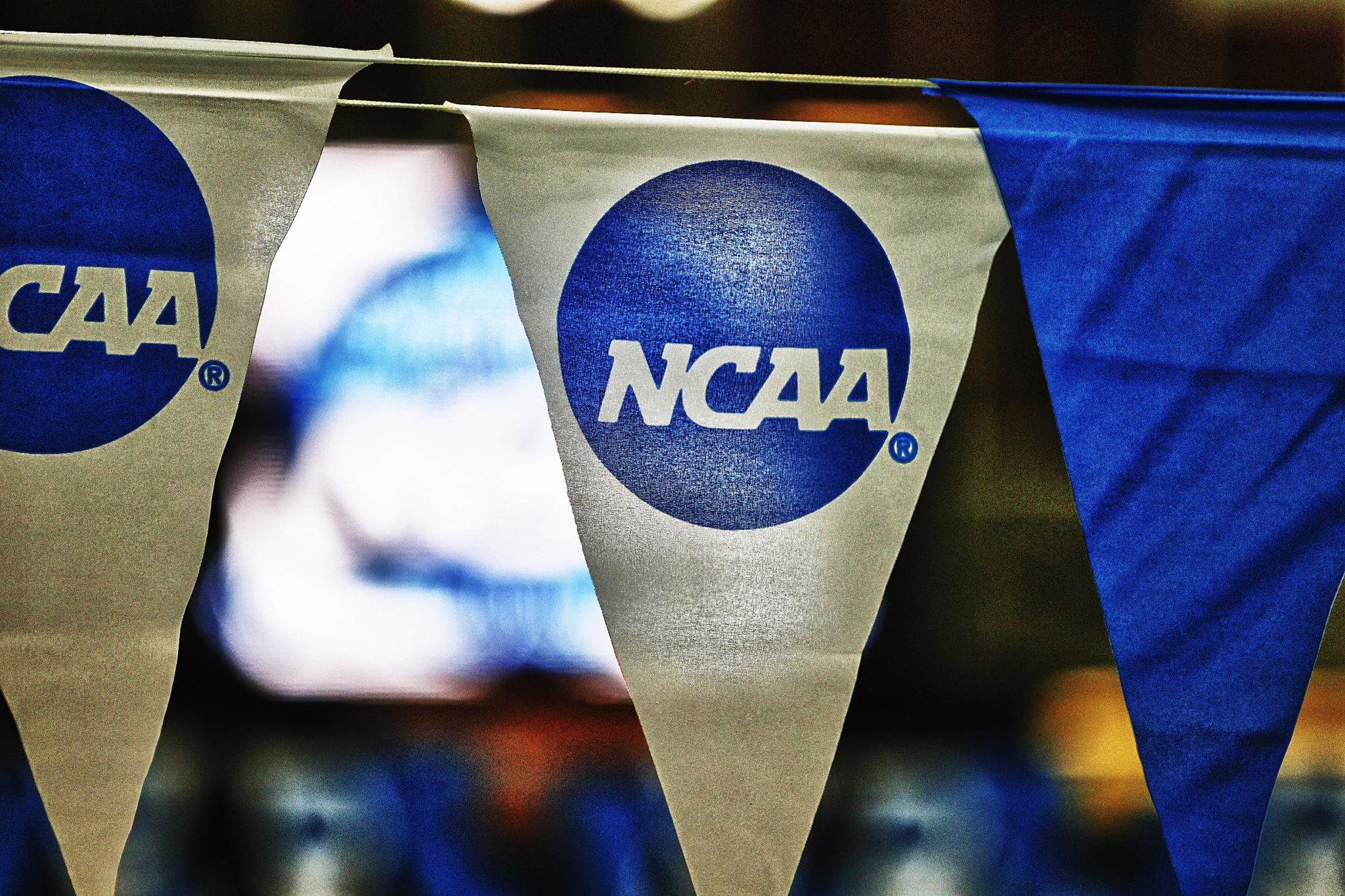

 AI-assisted summaryThe House vs. NCAA settlement allows direct payment to student-athletes and establishes a revenue sharing model.A College Sports Commission will oversee NIL activities and a clearinghouse called NIL Go will review deals over $600.Participating institutions, primarily Power 5 schools, must adhere to a revenue sharing cap and report NIL deals.The world of college recruiting with name, image, and likeness deals has seemed lawless and ungoverned since it initially became legal in 2021.
AI-assisted summaryThe House vs. NCAA settlement allows direct payment to student-athletes and establishes a revenue sharing model.A College Sports Commission will oversee NIL activities and a clearinghouse called NIL Go will review deals over $600.Participating institutions, primarily Power 5 schools, must adhere to a revenue sharing cap and report NIL deals.The world of college recruiting with name, image, and likeness deals has seemed lawless and ungoverned since it initially became legal in 2021.
Now, power conference schools are allowed to directly pay their student-athletes following the settlement of the House vs. NCAA antitrust cases.
The settlement, which was approved on June 13 by a federal judge in California, sets the stage for a tidal wave of confusion as schools, student-athletes, and their families navigate the uber-legislated college athletics ecosystem.
With the passing of the settlement also comes the formation of the College Sports Commission, which will become the new enforcement arm of college athletics.
The NCAA, along with the defendant conferences, released a 36-page Question & Answer package to address many of the common concerns and hurdles people are experiencing following the settlement.
Here are some of the biggest questions to how college athletics will operate pertaining to NIL under the new House settlement, and how the NCAA answered them in their document, which they released shortly after the settlement was approved:
Who is affected by the House Settlement?
![Florida Gators athletic director Scott Stricklin looks at the scoreboard during the second half against the Kentucky Wildcats at Steve Spurrier Field at Ben Hill Griffin Stadium in Gainesville, FL on Saturday, September 10, 2022. [Matt Pendleton/Gainesville Sun]](/gcdn/authoring/authoring-images/2025/06/08/SGAT/84102751007-usatsi-20909715.jpg?width=660&height=440&fit=crop&format=pjpg&auto=webp)
The House settlement forced the NCAA to pay nearly $2.8 billion in back damages over the next decade to any student-athlete that competed from 2016 to present day.
Looking forward, the House settlement will have an influence on every Division I athletic program, its administrators and coaching staffs, current and prospective student-athletes, their families, and fans as well.
Any schools named in the settlement or intend on joining by this year’s June 30 cutoff date are referred to as “Participating Institutions.”Who are Participating Institutions?All current members of the SEC, Big Ten, Big 12, Pac-12, and ACC are part of the new revenue-sharing model.What do Participating Institutions have to do now?The NCAA makes clear the obligations schools have following the settlement, including:Ensure that any additional payments or benefits being provided comply with the benefit cap and cap-related rules, policies and procedures.Report to the cap management reporting system (CAPS):All licenses between the institution and its student-athletes for name, image andlikeness; andAny other payments or benefits provided beyond what was permitted by NCAA Division I rules as of October 7, 2024, assuming such benefits are otherwise permitted by NCAA rules.Report all additional benefits that count against the benefits cap to CAPS and complete the annual attestation by September 1 after the close of each academic year.Adhere to the established roster limits.Agree that the designated enforcement entity (i.e., College Sports Commission) has theauthority to enforce NCAA Bylaws adopted as part of the settlement (e.g., roster limits,additional payments and benefits and noninstitutional NIL).Is there a cap to how much revenue a school can share?


NIL Go is run by Deloitte, a major consulting firm. It’s works as an online portal that student-athletes, schools, and third-party payees will use to verify that an NIL deal meets the criteria of a true third-party deal.
All players must submit deals to NIL Go within five business days of execution of the contract. From there, Deloitte and NIL Go will determine if the deal meets “valid business purposes” for an NIL contract.
Who is enforcing the new rules under the House Settlement?
The College Sports Commission will oversee NIL Go. The CSC was created by the major conferences to act as a self-policing arm of the NIL era. The CSC, headed up by former MLB executive Bryan Seeley, will determine if schools break any rules and then determine the appropriate punishments.
Seeley answers directly only to the Power-4 commissioners that hired him to police their conferences.
How will NIL Go judge if a deal is valid?
When the player agrees to the NIL contract or payment terms, it must include the promotion or endorsement of goods or services provided to the general public for profit. Otherwise, it is not a valid third-part deal and will be rejected by the clearinghouse.
Deloitte recently shared data that 70% of past NIL payments from boosters and collectives would have been denied under the current scrutiny.

How do multiyear agreements count against the revenue sharing cap?
Additional payments promised in multiyear agreements are counted against a Participating Institution’s benefits cap in the year that the payments and/or benefits are provided.
For example, if a player signs a two-year agreement for $100,000 through 2025-27, the first $100,000 would count towards the school’s cap in 2025-26, and the second $100,000 would count against the 2026-27 cap.
If the contract includes incentives, the total amount of incentives will count against the cap of the year that they promised. If the player fails to meet the criteria for the incentive, the amount is removed from the cap at the end of the year.
Who is a third-party under the House Settlement, and who isn’t?
Because where a money originates from decides whether or not it counts towards the cap, determining true third-parties is more essential than ever.
Associated entities/individuals are anyone that is known to have promoted a school’s athletics program, created or identified NIL opportunities, assisted in recruiting, or contributed more than $50,000 over their lifetime to a school (for individuals).
Are boosters considered associated individuals under the House Settlement?
Boosters are not automatically considered associated individuals. However, any booster or “Representative of Athletic Interests” defined by NCAA Bylaw 13.02.16 would automatically become an associated individual by the definitions set forth in the House Settlement and NCAA bylaws.
How do transfers and buyouts work under the new House Settlement?

Every contract is different, but the principles will be the same throughout. If a player transfers out of a school before the end of their contract, the school is only obligated to pay the terms of the contract that are valid up to the date they enter the portal. Any money that would have been owed to the player that transferred out can be removed from the benefits cap.
Take for example, a player that signs a deal that pays $100,000 per year over the course of two years. If the player transfers out before the start of the second year of the contract, the school is off the hook for the back end of the contract because it was never owed or due.
If there is a buyout clause in a player’s contract, the school that the player is transferring into must pay the entirety of the buyout to the school that the player departed from. The buyout also counts against the paying school’s cap, but cannot be added to the receiving school’s cap.
NIL
How Maryland's fastest high school sprinter scored a ground
Elise Cooper will go to the Olympics one day. The fastest high school sprinter in Maryland is one of the most promising racers the state has produced in recent years, setting a national record for the indoor 300-meter dash in February. She’s headed to Texas this fall on scholarship, and her dream of qualifying for […]
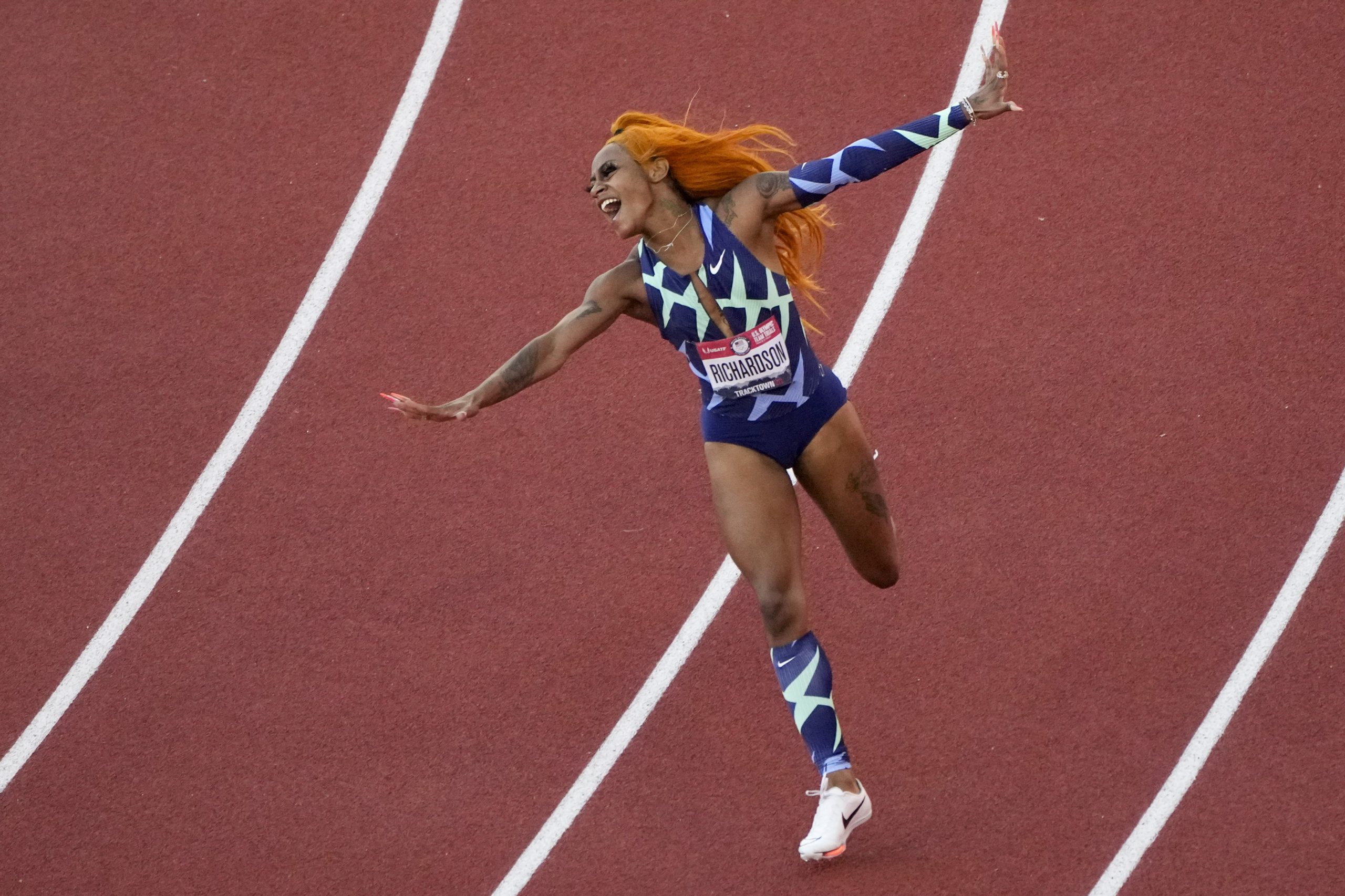
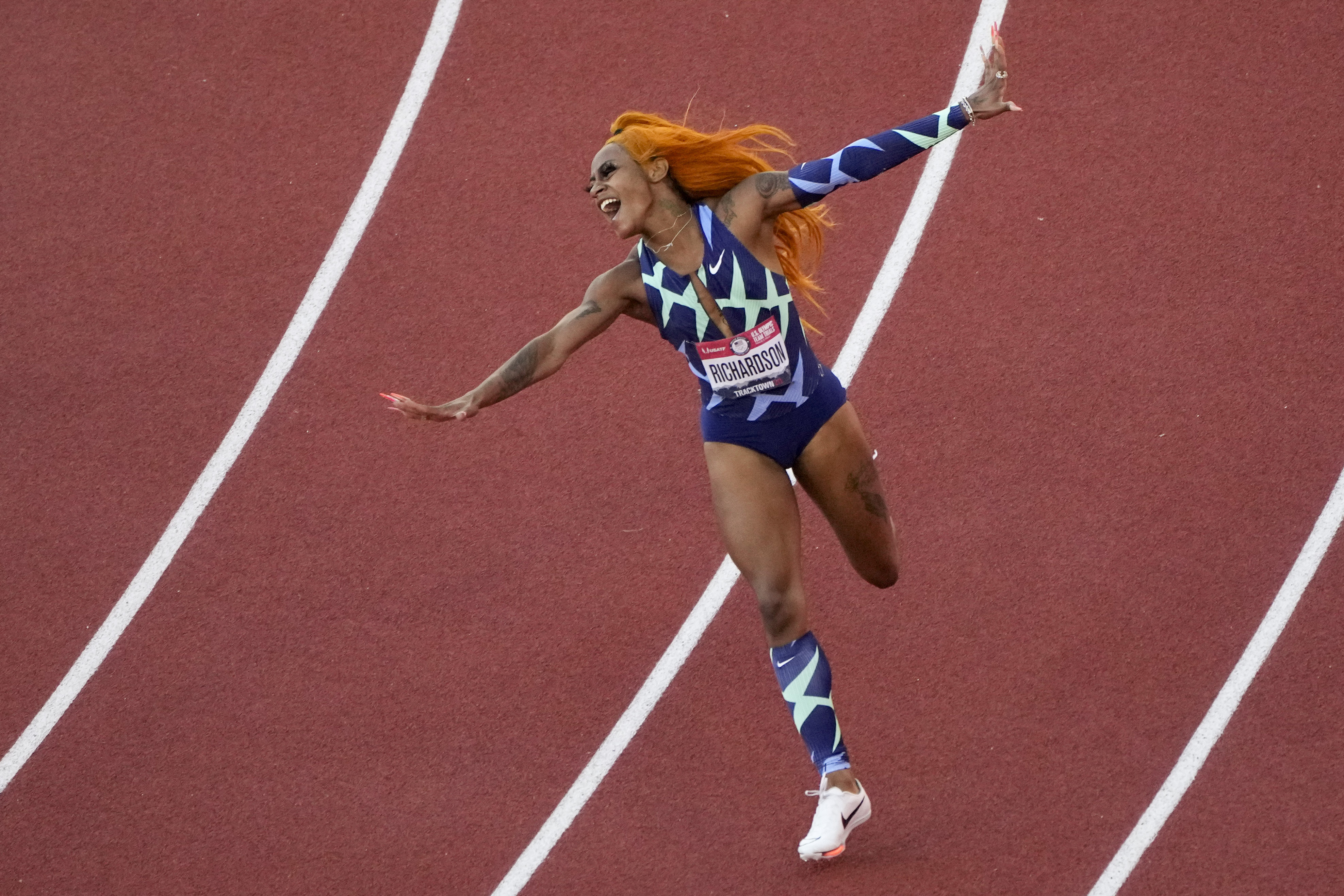
Elise Cooper will go to the Olympics one day.
The fastest high school sprinter in Maryland is one of the most promising racers the state has produced in recent years, setting a national record for the indoor 300-meter dash in February. She’s headed to Texas this fall on scholarship, and her dream of qualifying for the 2028 Games looms in the distance.
But, in the modern era of sports, with the money that floods the landscape, other goals arrive much faster — faster than a teenager is usually prepared for.
On her 18th birthday, Cooper signed her first name, image and likeness deal with Puma, essentially becoming a pro sprinter for one of the world’s biggest sports apparel companies on her first day of legal adulthood. Even before she signed, the outfitter had sent boxes of gear to her home in Owings Mills — all the free shoes, shorts and sweats the McDonogh School student could have imagined streaming through her door.
There was only one catch. Until the company announced the deal, she had to keep one of the most exciting things ever to happen in her career a secret from her closest friends.
For nearly three months this spring, the knowledge burned within her chest. At track practice, her teammates would notice her head-to-toe wardrobe from Puma, sniffing a deal was in the works.
Cooper’s strategy? Deny, deny, deny.
“I was low-key gaslighting them,” Cooper said. “I would just tell them, ‘I like wearing the stuff.’ It was longer than I thought. Way longer.”
In April, Puma finally made public what the Cooper family kept to themselves for what felt like an eon — Cooper was the company’s first high school sprinter signed to an NIL deal, a landmark move in a brand-new market. Only a few years ago, such young athletes would never have been allowed to profit off their athletic careers — and also compete collegiately — in the name of protecting the American curiosity formerly known as “amateurism.”
The Baltimore Banner thanks its sponsors. Become one.
It’s a new day for athletes and their families, who for the first time have the ability to cash in on NIL agreements that pay off years of hard work, even if they’re teenagers in high school. But it’s also a new, potentially treacherous marketplace with few regulations and even fewer experts who can give good advice.
For nearly two years, the Coopers considered various deals from some of the biggest companies in sports, holding out past offers of free gear, of flights to national meets and the prestige of being one of the first high schoolers to get signed.
Danielle Cooper — Elise’s mother, whom she lovingly calls her “mom-ager” — consulted dozens of parents, coaches, lawyers and industry pros in an effort not to get the most profitable deal for her daughter but the one that made the most long-term sense. Even the people she asked knew mostly one corner of the business. Almost no one is evaluating the bigger picture of a rapidly evolving landscape. What is a caring parent to do?
“Basically, no one knows,” Danielle Cooper said. “Even the people you think should know don’t really know. It’s really hard to go on.”
An uncharted economic frontier
It has been less than four years since NIL deals were permitted by the NCAA, a moment that stands as a starting pistol in a race toward economic chaos. Although the new system corrects flaws of the amateurism model by distributing more money into the pockets of the athletes who generate it, the clandestine nature and shadowy rules of the marketplace defy easy understanding for the families caught in the swirl. Especially for Olympic or so-called “non-revenue” sports.
The Baltimore Banner thanks its sponsors. Become one.
Bill Carter, the founder of Student Athlete Insights, hears NIL stories and questions all day long from families who haven’t thought much about the money before. A family of a highly rated lacrosse recruit recently went on a college visit during which an NIL collective offered their child $30,000 to enroll at that university.
The family had been largely considering other factors: academics, coaching staff, the program’s track record. Suddenly, they were ambushed by new questions.
Is $30,000 a good deal? Should we go to other schools and ask what their NIL offers are? Could we negotiate more money? Would that be too pushy?
“They left stunned,” Carter said. “They didn’t know whether it was the deal of a lifetime or an insult.”
While deciding whether to accept tens of thousands of dollars may be a good predicament to face, the families of these elite athletes are increasingly finding themselves in these positions. Markets have stabilized somewhat for Division I football and basketball players, and parents can more easily find what might constitute a fair NIL deal based on the school and the position their child plays.
The Baltimore Banner thanks its sponsors. Become one.
But in track the field of top-flight talent is so small — Carter estimates as little as 0.02% of even NCAA track and field athletes draw significant NIL interest — there isn’t any sort of conventional wisdom for how these deals should work.
Prep track meets are dominated by a few shoe companies, particularly Nike and New Balance, which annually run competing meets they each call “nationals.” Elise is running this weekend in the New Balance Nationals at Penn. She’ll be a top competitor in the 200 and 400 meters — largely because it’s easier to drive to Philadelphia than it is to fly to Eugene, Oregon, where Nike stages its event.
The first NIL deals the Cooper family heard about were stipends, around $1,000 or so, from these companies to cover the cost of travel and lodging for their big meets, drawing elite competition into the field. These are typically accompanied by flattering social media posts and, of course, complimentary gear.
For a teenager, a pair of free shoes is a sweet siren song. Elise figured she should start her strides into the NIL market by taking one of the short-term agreements. Danielle was not as convinced, especially after talking to a family friend who has worked as a sports agent.
“It was my mom who talked to other people and made the decision to hold out,” Elise said. “I kinda wanted stuff now, but I started to understand more after doing more research. NIL’s always evolving, so I’ll never fully understand it.”
The Baltimore Banner thanks its sponsors. Become one.
Confusing by design
The confusion around NIL deals, especially at the high school level, is not by accident. It’s by design.
The Maryland Public Secondary Schools Athletic Association offers a seven-page NIL guidance that has one key rule: When an athlete makes a deal, they cannot be wearing their high school uniform or use content captured from high school competitions. The regulations mainly serve to keep the MPSSAA separate from the economic frenzy.
Carter said that is a common approach by high school associations across the country. They are most concerned with keeping themselves, and their intellectual property, apart from the NIL chase — what he describes as a legal “moat” around the schools. The list of “do-nots” can help the associations, but it rarely offers much help to families.
“The conversations people frequently have around NIL are almost entirely viewed through compliance or almost entirely viewed through seizing the opportunity — but those conversations rarely converge,” Carter said. “It’s so rare they come together, even though that would benefit the athlete the most.”
The way anyone learns anything about NIL is by exhaustively asking around. Not everyone is lucky enough to have Danielle Cooper as a mom or Owings Mills Track Club coach Michael Ray as a supporting resource.
The Baltimore Banner thanks its sponsors. Become one.
Ray and the Coopers made it their mission to get as much guidance as possible. They talked to Quincy Wilson, the Bullis School standout who won a relay gold medal at 16 last year in Paris (he signed with New Balance). They spoke with the Whittaker family, whose daughters Juliette and Isabella both went to the Olympics last year. They spoke to coaches and employees affiliated with brands, trying to figure out what the structure of a fruitful long-term deal would look like.
But even knowing the framework (not necessarily the dollar value, which can be hard to fish for, even among friends) of some of these deals helped only somewhat. In track, value can be extremely subjective, and even more so for a high schooler who, although she has run in the Olympic Trials, has not captured the international success that others with deals already have on their résumés.
“Because it hasn’t become commonplace, you’re really setting the journey that’s brand new,” Ray said. “There’s no standard deal. They might have an idea of what your value might be, you might have a totally different idea, but there’s no template. It’s hard being the first.”
Athletes and their families are not the only ones taking timid steps into the market. The brands themselves have spent the last few years trying to figure out the best way to get in on high schoolers, too.
José (pronounced “yo-say”) van der Veen, Puma’s global head of product line management, ran middle distances in her native Netherlands before going to the University of Texas El Paso in the late 1990s. She had a small regional deal with Puma that she had to give up because of NCAA rules — “I was a little bit bummed at the time,” she said — so she appreciates how quickly the circumstances have changed.
Puma fancies itself a youthful and energetic brand, capitalizing on the colorful personalities of gold medal-winning sprinters like Usain Bolt and Julien Alfred as its spokespeople. While Nike and other brands were quick to jump into exploring high school NIL deals, Puma was more circumspect. There were so many differing state regulations, so few certainties in investing in athletes so young.
“It’s uncharted,” van der Veen said. “For our in-house lawyers, it’s a space we want to be fair and be a little cautious. But the market, that’s where it’s moving to. You obviously have to go there because other brands are going there.”
Elise Cooper was a good candidate for Puma because she’s fast, first and foremost. But it’s also no accident that the brand wanted a candidate with the kind of support system Elise has in her corner.
Her parents were both athletes, and both her sisters are track stars, too (twin sister Elena is heading to Stanford, while older sister Ella competes for Harvard). She’s competed for Owings Mills Track Club under Ray for more than a decade, and Ivy League schools recruited her for her academic prowess before she committed to the Longhorns.
With high school athletes especially, companies want good long-term investments when they bring a teenager into the fold.
“The line to become professional athletes, it’s not linear,” van der Veen said. “Elise seems to have a very good support network around her. If she gets injured, if something happens, she’s smart enough to figure out it won’t define her. … At the highest level, the talent of these athletes eventually becomes pretty similar. It comes down to how mentally tough you can be.”
How a deal came together
The day Elise Cooper set a national record was unusual not because there was some electric feeling in the air leading up to her run — it was the opposite.
Cooper was at The Circuit in Philadelphia on Feb. 28, the day before the meet started in earnest. In the video, there is almost no one in the stands. She was racing against her friend Sydney Sutton from the Bullis School.
Cooper came into the race hoping for a personal record, but she did not imagine smashing Shawnti Jackson’s record by more than three-tenths of a second — a massive gap in the blink-length margins of sprinting.
“I guess I felt fast,” she said. “But I looked at the clock and I was like, ‘Oh my God!’”
Although Cooper prides herself on her ability to perform under pressure, one of her best runs ever came in one of the most low-stakes races of her career. But the days of racing in front of empty stands are numbered, and even more is on the line now that she’s under her first pro contract.
Track deals, maybe even more than those in other sports, are laden with incentives. Athletes get bonuses for reaching PRs, for clocking under certain times, for winning big meets. Although the Coopers did not share all details of Elise’s contract with The Banner, her deal with Puma — as well as future extensions she hopes to sign — have some of these incentives.
The unusual thing about track deals, however, is also the potentially hazardous piece: Sometimes, athletes who get hurt or don’t meet specific goals end up giving money back to their sponsors. Ray has seen it happen with other athletes he’s coached.
There are so many inherent tensions with signing track stars in their teens, it can be hard to decipher what kind of business arrangement makes sense.
“You at least have to look at it with an eye toward the future and what the individual athlete might accomplish,” Ray said. “A good deal in 2025 might not be a good deal in 2026 if you go to college and set the world on fire.”
Trying to be mindful of all of these factors, the Coopers sought a deal with a company that could mature over time. Puma wasn’t the only brand they considered. They liked On Running, a relative upstart from Switzerland founded in 2010, but the company didn’t have as long a track record with sprinters as Puma did. Ultimately, the relationships with the company and the Puma spikes themselves helped seal the Coopers’ decision to sign.
“A lot of people were saying, ‘This is the shoe she’s going to run in if she goes to the Olympics in 2028,’” Danielle said. “So that got in my head, and I was like, ‘Well I really do like On as a brand.’ But then … you’re gonna have to wear that shoe.”
The red carpet treatment from Puma felt particularly special for the Coopers, who traveled to the company’s American headquarters in Boston together. Elise tried out new gear, saw shoes in development that won’t be released for years, and had her feet closely measured for potential custom work down the line.
Puma is a Formula 1 racing sponsor, and Elise (who is a huge fan of F1) could be attending the Grand Prix in Texas in October as a special guest of the brand. A flight to the company’s world headquarters in Germany is sometime in the future.
But with all the perks comes pressure. Danielle has emphasized to Elise that she has to start thinking of track in more serious terms. No late nights cavorting in her friends’ hotel rooms before a big race. Although Elise will wear Nike gear when she competes for Texas under the school apparel deal, she’s contractually obligated to wear Puma at all other events (Ray bought Puma gear for himself as a show of solidarity).
For the previous 10 years, track was Elise’s passion. She still loves it, but now it’s her job.
“I think, when she saw the contract,” Danielle said, “it was when she realized, ‘OK, this is the real deal.’”
Everything on the line
Since she was 7, the sound of the starting gun has always given Elise a jolt.
It’s a little burst of fear that has never fully gone away — a tic that annoyed Elise when her mom pointed it out to me. “OK, first of all, that wasn’t even relevant,” she said, rolling her eyes in Danielle’s direction.
Danielle dotes on her daughters, and while Elise sometimes teases that the parenting style can feel over the top — Danielle has a running gag that she will buy an RV next year to drive to her daughters’ various meets — she ultimately embraces her mom’s dedication to her career. On her notes app on her phone, there’s a long to-do list of things she wants Danielle to accomplish.
“Not even halfway finished,” Elise playfully jabbed. “Wow, look at that.”
As much as she can push back on her mom’s devotion, she deeply appreciates the fact she probably would have never landed the deal with Puma without that level of diligence. Having a parent who can do this much legwork is a luxury not every athlete has.
Carter said the one piece of advice he would give every family trying to navigate the NIL market is to have patience. If a deal is on the table, there’s a good chance it will stay there for weeks or months. He estimated 90% of the regrets he hears from people are that they pounced too quickly.
“I would tell anyone to slow down and think about the ramifications of it before you sign it,” he said. “Spend a little bit of time thinking about who might help you: an attorney, someone to review the contract, a financial adviser. Get their input, and move through the process slowly.”
The market could help athletes and families by stabilizing and adding regulation. As the NCAA moves into revenue sharing, there’s a sense that NIL will become less important to the overall economics of sports — and companies would welcome some corralling from the Wild West the space is now.
It reminds van der Veen of the chaos in the late 2010s when “super spikes” hit racing and led to records all over getting slashed. Over the next few years, regulating bodies stepped in, other companies caught up and the field evened out again. She hopes the forces overseeing NIL in the NCAA and high schools have a similar flattening effect soon.
“I know the coaches are getting together right now, saying, ‘Hey, we really need to protect these Olympic sports,’” she said. “I really think, in the next couple of months, you’ll see pushback against the rules, more regulation of it. It will get more established and clearer.”
But it’s also likely that elite track athletes like Elise Cooper will always be a kind of outlier, that there may never be one template for the best deal or partnership that makes the most sense or carries the least risk. There may be less than a dozen high schoolers in any given year with the talent to attract contracts from big companies, and their families will always have steep learning curves in the short window that such deals are available.
What helps the Coopers is how independent Elise is when it comes to the races. She warms up and prepares on her own, mentally envisioning the race — tamping down her quickening pulse as she awaits that sharp bang of the starting gun that has never quite lost its intimidating bite.
“The difference between her and other athletes for me is she’s always able to get race ready on her own,” Danielle said. “She’s never needed me for the race. She’s always been independent in her preparation.”
There’s more on the line now than ever for Cooper, an axiom for her career from here until (at least) she shoots for Olympic gold in 2028. But the list of goals she has are all about her PRs — not about her salary, college or world titles or even earning all the free shoes in the world.
That’s why those around Elise see the Puma contract not as the conclusion to a saga but merely another step. That’s what everyone is hoping for.
“You see when the kids get serious about it and what that means for the sacrifices they make for themselves,” Ray said. “Usually the motivator is something beyond money. They really want to be the best of the best.
“Elise,” he added, “is one of those people.”
NIL
ASU, Arizona offer test case for success in rev-share era
Ground zero for the new era of college sports is a 100-mile stretch of interstate in the Sonoran Desert. Which school, Arizona or Arizona State, will thrive in the era of revenue share and legitimate NIL? The outcome will reveal much about the competitive balance within the state and across major college sports. Do campuses […]
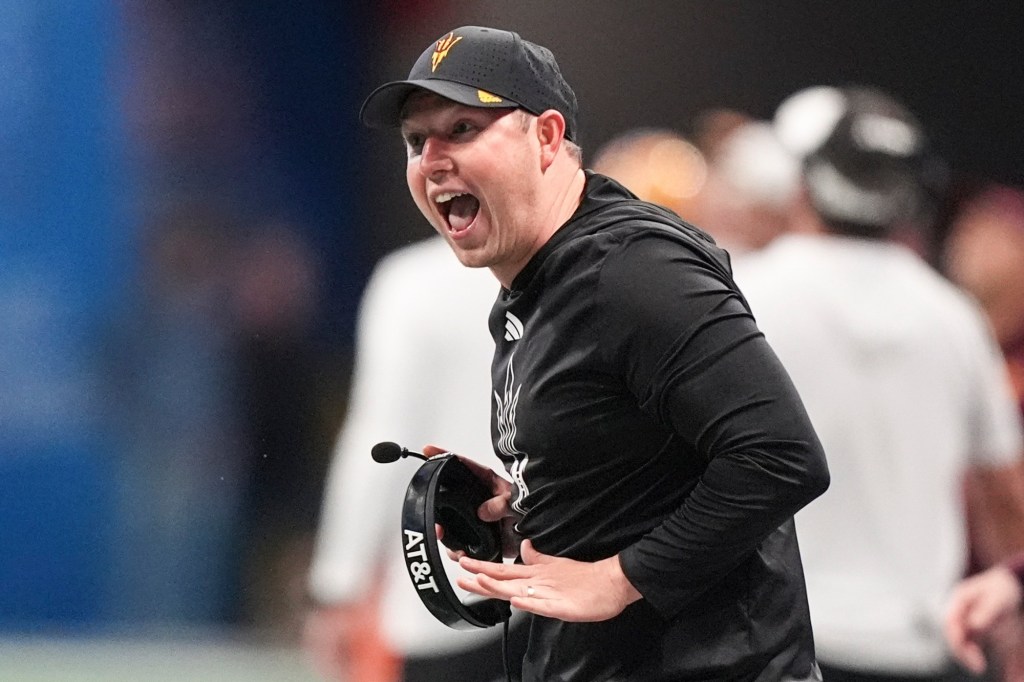
Ground zero for the new era of college sports is a 100-mile stretch of interstate in the Sonoran Desert. Which school, Arizona or Arizona State, will thrive in the era of revenue share and legitimate NIL? The outcome will reveal much about the competitive balance within the state and across major college sports.
Do campuses in major cities possess an advantage?
How might market competition from professional sports impact success?
Will high-profile basketball programs undercut football success?
The Sun Devils and Wildcats are bitter rivals competing in the same conference and the same (public) university system, but their locations and resources are wildly different.
Nowhere else is the contrast as stark.
UCLA doesn’t have a UC system rival located in a college town.
Washington and Washington State aren’t in the same conference or university system.
Georgia and Georgia Tech might be roughly comparable if their locations were flipped.
New York City, Philadelphia and Dallas are devoid of public universities that compete in the Power Four. Houston is bigger than Phoenix, but the Cougars don’t have a bitter natural rival in the Big 12.
The dynamics in Arizona will unfold against an established backdrop: Fair or not, the Sun Devils are considered an underachiever in major college football and basketball; the Wildcats are viewed as an overachiever.
But that backdrop seemingly has little relevance in the new era. The House vs. NCAA lawsuit settlement — former ASU swimmer Grant House is the named plaintiff — will change the economics of college sports like nothing else.
Two pillars are particularly relevant for the Sun Devils and Wildcats:
— Schools can share up to $20.5 million with athletes beginning in 2025-26. Across the power conferences, roughly $15 million will be earmarked for football, with $3.5 million to $4.5 million to men’s basketball and the rest to Olympic sports. (The Big 12 will permit schools to allocate as they see fit.)
— The power conferences created an NIL clearinghouse designed to eliminate the pay-for-play anarchy that has existed during the recent era of booster-run collectives. Athletes are now required to report NIL deals of $600 or more. A technology platform, NIL Go, will assess whether the contract terms fall within a reasonable range of compensation. Deals that are initially rejected can be altered and resubmitted, or the athlete can choose arbitration.
How might those factors play out in Tucson and Tempe? Where does the advantage lie?
Clearly, the Sun Devils will have more opportunities for legitimate NIL deals in metropolitan Phoenix (population: 5 million) than Arizona athletes will in Tucson (1 million).
But the Sun Devils also have more competition for dollars and attention with the Diamondbacks, Cardinals, Suns and Mercury.
In Tucson, all eyes are on the Wildcats. There’s only one option for businesses seeking exposure through partnerships with sports teams or franchises.
But that’s just one piece of the broader calculation in the post-House world.
Arizona will undoubtedly feel compelled to allocate more revenue to its men’s basketball program than the average power conference school. Every dollar plowed into basketball could be one less dollar available for football.
Kansas, UCLA, Kentucky and North Carolina are in similar positions. Arizona State is not. The Sun Devils have always valued football above basketball and seemingly can share the maximum with coach Kenny Dillingham’s roster.
“(Power Four) schools where basketball is king are going to have to make an important choice under the House settlement terms,” sports attorney Mit Winter wrote on the social media platform X.
We don’t know the specifics, but it’s easy to envision ASU spending $1 million-to-$2 million more on football than the Wildcats. (One thing they have in common: Both schools must fund baseball at a competitive level, which isn’t the case for some schools in the Big 12.)
Will the elite basketball program’s lofty status undercut resources for Arizona football?
Will the passion of a college town in the era of legitimate NIL trump the big business opportunities that exist in a pro sports market like Phoenix?
And how will the internal dynamics play out? Will the schools continue to subsidize their athletic departments at current levels? How committed to success is longtime ASU president Michael Crow? What about new Arizona president Suresh Garimella?
If the campus-level commitments are equivalent, the Wildcats and Sun Devils could offer an unfiltered look at the new world order — at the role fan passion, competitive priorities and business communities will play in shaping the roster-building process.
Will the big-city schools gain an insurmountable advantage?
Or does the edge lie with the only thoroughbred in a one-horse town?
Bitter rivals in the Big 12 could offer a fascinating test case for success in the post-House world.
*** Send suggestions, comments and tips (confidentiality guaranteed) to wilnerhotline@bayareanewsgroup.com or call 408-920-5716
*** Follow me on the social media platform X: @WilnerHotline
Originally Published:
-

 High School Sports2 weeks ago
High School Sports2 weeks agoParents Speak Out As Trans Pitcher Throws Shutout In MN State Quarterfinals
-

 Professional Sports2 weeks ago
Professional Sports2 weeks ago'I asked Anderson privately'… UFC legend retells secret sparring session between Jon Jones …
-

 College Sports3 weeks ago
College Sports3 weeks agoIU basketball recruiting
-

 Health2 weeks ago
Health2 weeks agoOregon track star wages legal battle against trans athlete policy after medal ceremony protest
-

 Professional Sports2 weeks ago
Professional Sports2 weeks agoUFC 316 star storms out of Media Day when asked about bitter feud with Rampage Jackson
-

 High School Sports3 weeks ago
High School Sports3 weeks agoThe Arizona Daily Star's top high school athletes, coaches and moments of the 2024
-

 NIL3 weeks ago
NIL3 weeks agoNCAA Sends Clear Message About Athlete Pay and Roster Limits
-

 NIL3 weeks ago
NIL3 weeks agoMen's college basketball Top 25 reset
-

 Social Media3 weeks ago
Social Media3 weeks agoControversial Athletics Gender Dispute Goes Viral After Riley Gaines Lashes Over Authorities
-

 Rec Sports3 weeks ago
Rec Sports3 weeks ago2x NBA All-Star Reacts to Viral LeBron James Statement

















 DEBATE IS OVER?! Stephen A. and Shannon Sharpe were ‘SHELLSHOCKED?!’ | First Take
DEBATE IS OVER?! Stephen A. and Shannon Sharpe were ‘SHELLSHOCKED?!’ | First Take













